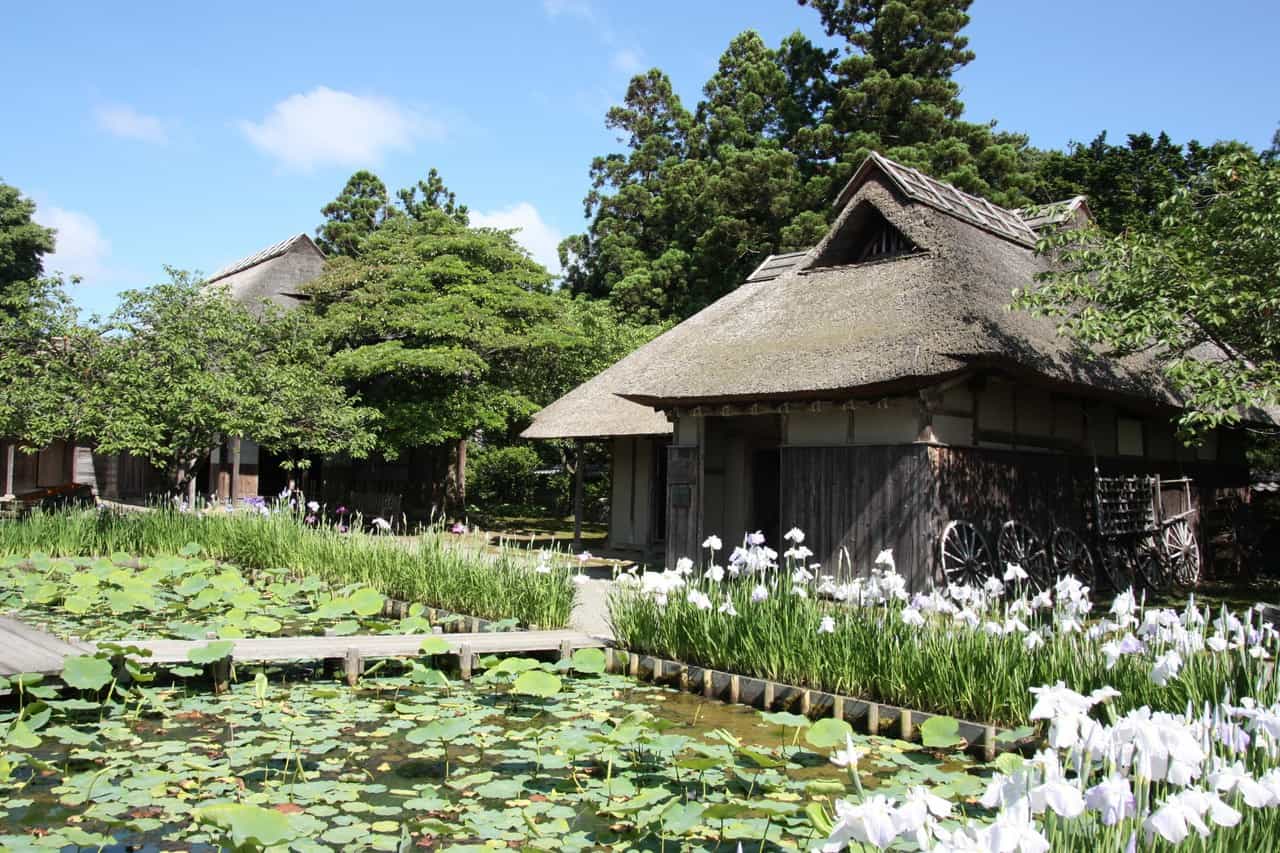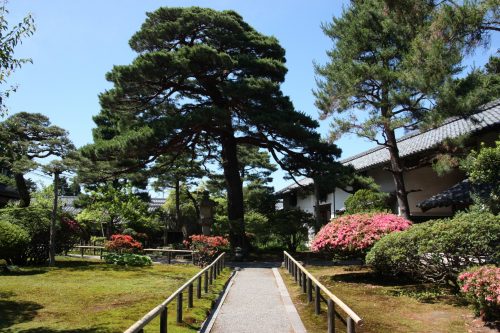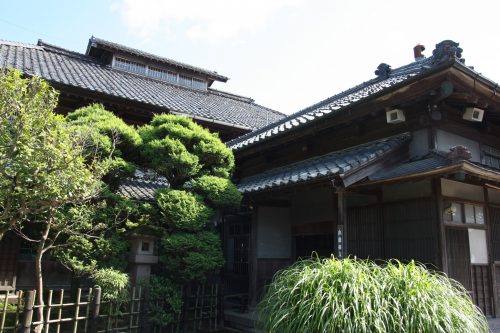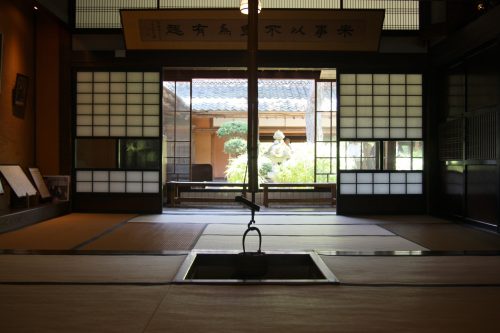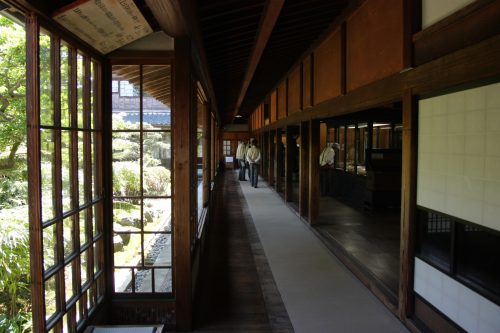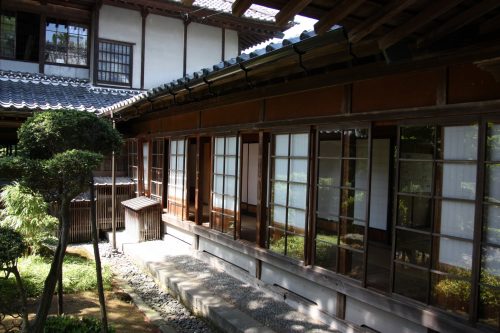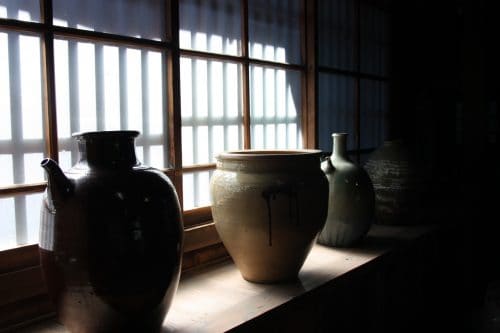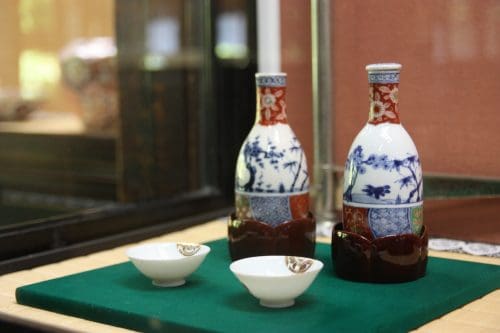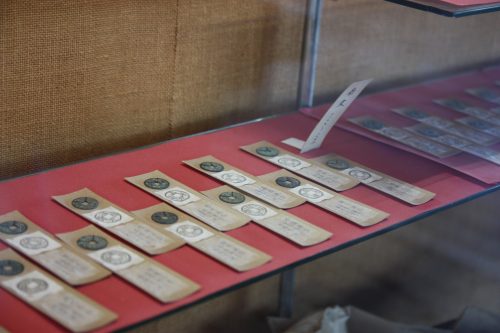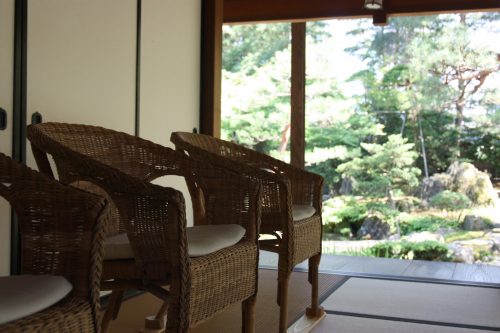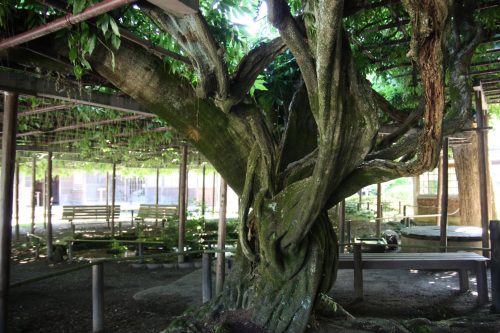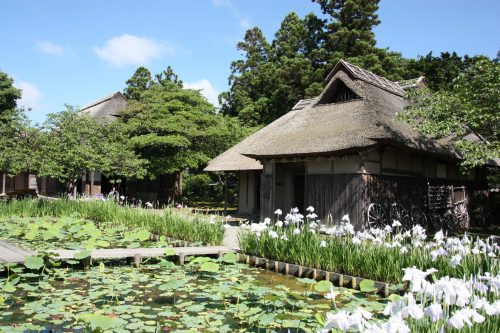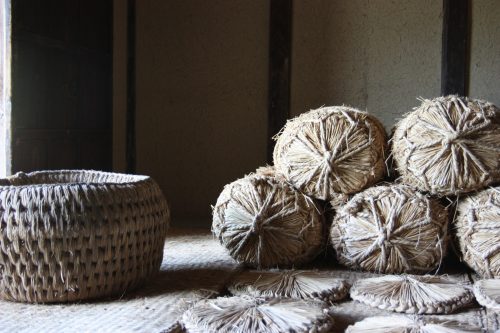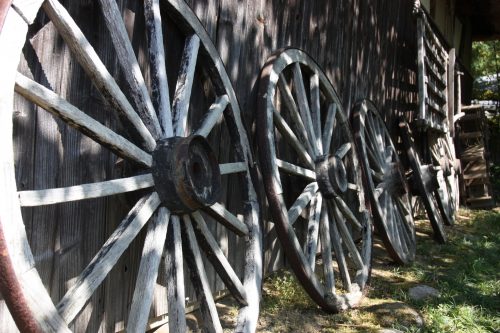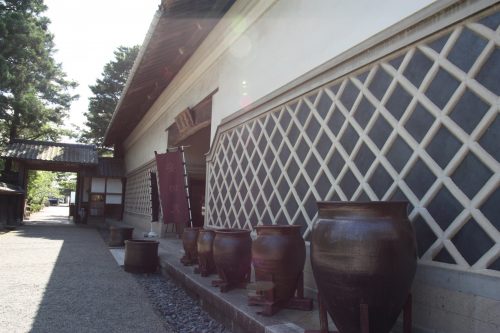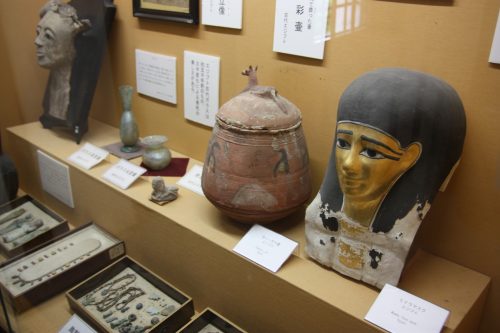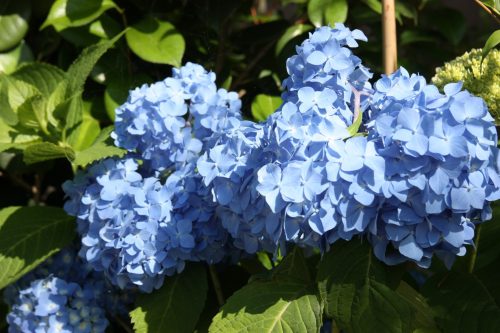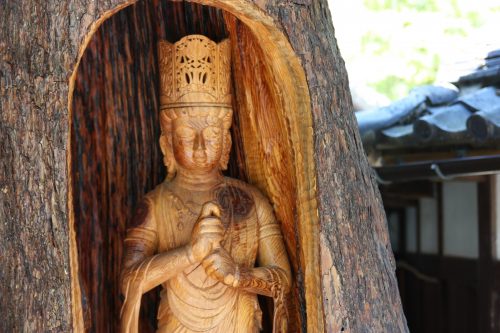Sponsored by Niigata city
Niigata, main city in the prefecture of the same name, started to flourish in the Edo Period (1603-1868) thanks to its strategic position as a harbor city, at the crossroads between Hokkaido in the North and Osaka in the South. But Niigata is also famous as a rural city with a rich land and fertile soil. It’s no wonder then, that rich families of land owners and merchants in the Edo period started to be build residences in the region. One of them has been preserved and can now be toured under it’s new name, the Northern Culture Museum.
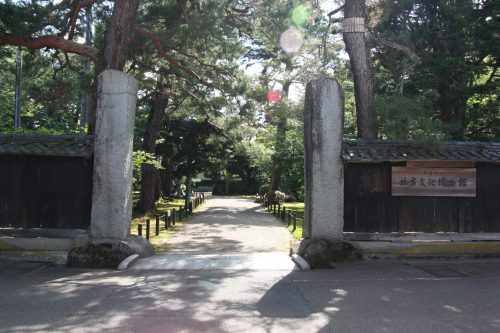
The entrance to the Northern Culture Museum.
The story of a rich family of land owners in Niigata
On the south side of Niigata City, far from the hustle and bustle, you can find the Northern Culture Museum. Although it is known today as a museum, it used to be a family residence. The museum is the preserved residence of the Ito family, who started building their fortune as land owners in 1756, and only became more prosperous generation after generation. They actually ended up becoming the most important rural land owners in the Echigo region. Remarkably the Ito family still lives here, which makes this museum very unique.
In 1882, members of the fifth Ito generation started building a new residence for the whole family. The construction only ended years later in 1889. During the years of construction, and even after, the family kept acquiring more land, adding to the the Ito domain. In 1908, the property was already covering a surface of 1,400 hectares and could welcome the entire Ito family, as well as their sixty maids and servants.
The end of World War II did not offer an ideal context for conducting business activities as a land owner. The leader of the 7th generation of the Ito family decided in 1946 to turn the family residence into a museum. He invested his entire fortune into the conservation of his family’s heritage.
Visiting the Ito family residence
It’s hard not to feel the cultural wealth of this place while strolling around the 250 year old estate. And what better witness to the years gone by than the magnificent main building made of 65 rooms! Built following a traditional Japanese style, the architecture of the main building is typical of the type of houses that rich land owners would build at that time.
Once you’ve left your shoes by the entrance before stepping onto the many tatamis, you’ll enter an impressive and majestic building. For a Japanese-style house, that means a harmonious, sleek and rather minimalist space.
The sun light fills the entire space, either directly or through the paper screens of the many sliding doors, called shoji. Wood can be found from floor to ceiling, bringing robustness as well as warmth to the building.
Wherever you lay your eyes, you’ll find in every corner of every room remnants of a bygone era: the former kitchen fireplace, ceramics, tea pots, sake serving sets, coins, family pictures…all of it is impeccably preserved, helping visitors imagine the life scenes that would have played out in these spaces not more than two centuries ago.
The building opens out onto a garden, with every window offering a view of the green oasis surrounding it. Even though the living room or upstairs rooms offer a nice view of the garden, the best point of view is undoubtedly the banquet hall and its incredible panoramic view of the traditional Japanese garden (it was sadly closed to visitors for a private event on the day I visited). The garden was conceived by landscape designer Taiami Tanaka and took five years to complete. I already want to go back there in November to observe the vibrant maple leaves.
The Japanese garden and its many annexes
Even though I could have stayed for hours in that sumptuous building, in awe of the decor around me, the curiosity of discovering the garden and its many annexes helped me put my shoes back on and keep going with the tour.
I started with the incredible centenary wisteria and its branches spreading over a 146m2 area! When fully in bloom in May, you can find many visitors resting under its dome of mauve flowers.
I then let myself be tempted by the lotus pond. At first, hidden from the visitors, this part of the museum feels like jumping into another time and space. There, by the pond, you’ll find two traditional houses with a thatched roof that were originally built in the smaller villages of Niigata Prefecture before being moved to the museum. They appear today just as they were in the Edo period and offer a glimpse into the life of farmers of the region 400 years ago.
The visit does not end there! On the way to the art gallery you’ll find a tea house with a unique shape. Taking the form of a triangle, the tatami covering its floor are not the usual rectangular ones but are rather triangle or diamond shaped. A unique feature!
And there I end up in front of the building where rice used to be stored, now turned into an art gallery. Inside, objects like engravings or refined sculptures made of wood are carefully preserved behind windows.
Visiting the museum can take quite a while and you will be able to find a few restaurants in case you want to take a break. One of them even offers visitors an initiation to cooking your own rice in a traditional cast-iron pot called a hagama. It is also possible to shop for souvenirs in the museum store or even spend the night on the spot in the Dairo-an Inn.
On your way out, don’t miss the Buddha Mahavairocana sculpture carved inside a pine tree. To be honest, I’d love to join him and be able to enjoy this haven of peace just a little while longer.
Reaching Niigata
From Tokyo: The trip from Tokyo to Niigata can be easily made via the Joetsu Shinkansen Line in about two hours.
From Kanazawa: You will need around three hours and 30 minutes to reach Niigata from Kanazawa Station via the Hokuriku Shinkansen Line, with a change in Takasaki.
Practical information
The Northern Culture Museum is located outside the city center of Niigata. To reach it, you can catch a bus from Niigata station (Line 95) that will take you to the museum in about 45min. If you take a taxi, you will only need 20min.
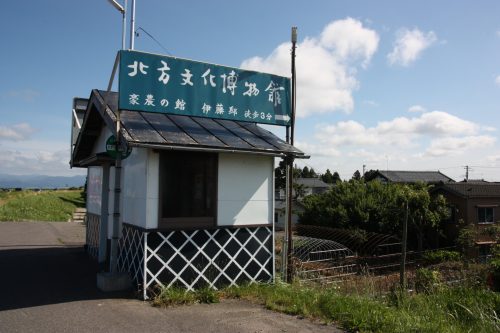
The museum bus stop.
For more information, go check the museum website (available in English).
Do you need more information? You can find up-to-date information on Niigata’s history, main tourist attractions, accommodation, gastronomy, and transportation right here.
[cft format=0]

